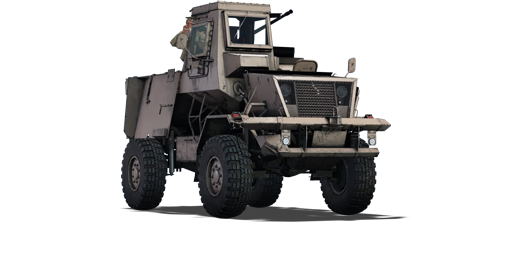




The Ystervark is a self-propelled anti-aircraft (SPAA) vehicle operated by the South African Defence Force (SADF). Taking its name from the South African cape porcupine, an animal with a powerful physique protected by an astonishing array of spines to defend itself against predatory animals, a vehicle named after this species should represent those attributes. The Ystervark SPAA is a solid and robust vehicle designed to withstand the harsh South African environment. The Ystervark SPAA was developed in the 1980s in response to a mobile and mine-protected anti-air platform request. It is based on another project, Project Sireb, which produced three mine-resistant vehicles as potential replacements for the Buffel armoured personal carrier (APC). One of the three prototypes, nicknamed the "Bulldog," would serve as the foundation for the Ystervark SPAA by removing the passenger tub and replacing it with the weapons platform.
Introduced in Update "Ground Breaking", the Ystervark is exceptional at anti-air roles in the right hands. Since the crew is all exposed without armour protection, it is critical to always remain hidden and undetected when driving. This vehicle can easily bring down any aircraft during engagements thanks to its fast-firing and accurate 20 mm GAI C01 autocannon. As the ammunition is limited, it is critical to fire in short bursts. It also has some limited anti-tank capability owing to its high-velocity armour-piercing (HVAP) ammunition, although it is not recommended to use such a vehicle to engage enemy ground targets unless absolutely essential.
| Belt | Belt filling | Armor penetration (mm) at a distance: | |||||
|---|---|---|---|---|---|---|---|
| 10 m | 100 m | 500 m | 1000 m | 1500 m | 2000 m | ||
| HVAP-T/HEI-T | 57 | 52 | 37 | 24 | 15 | 10 | |
| HEI-T/HEI-T/HVAP-T | 57 | 52 | 37 | 24 | 15 | 10 | |
| HVAP-T/HVAP-T/HEI-T | 57 | 52 | 37 | 24 | 15 | 10 | |












Mobility | |
|---|---|
Protection |
|---|
Firepower | |
|---|---|